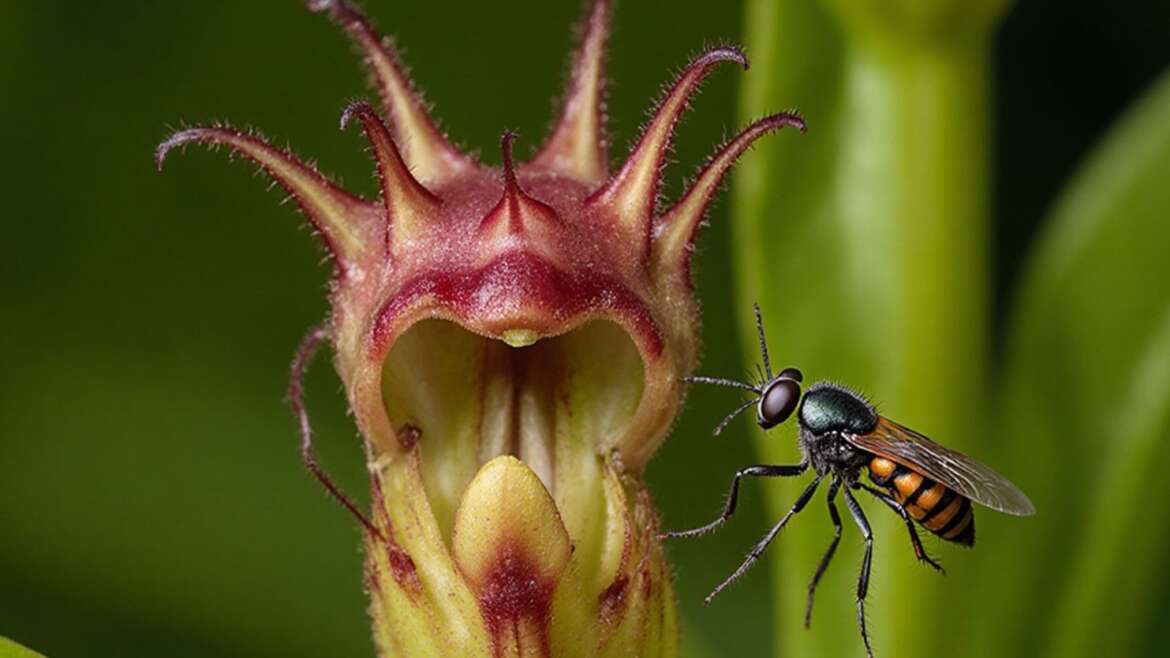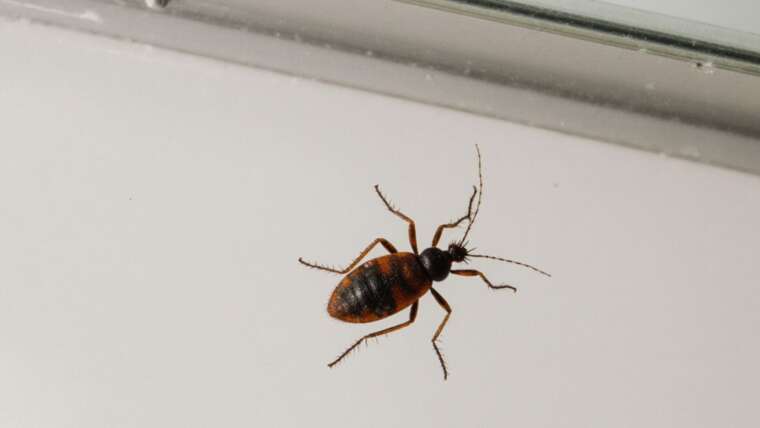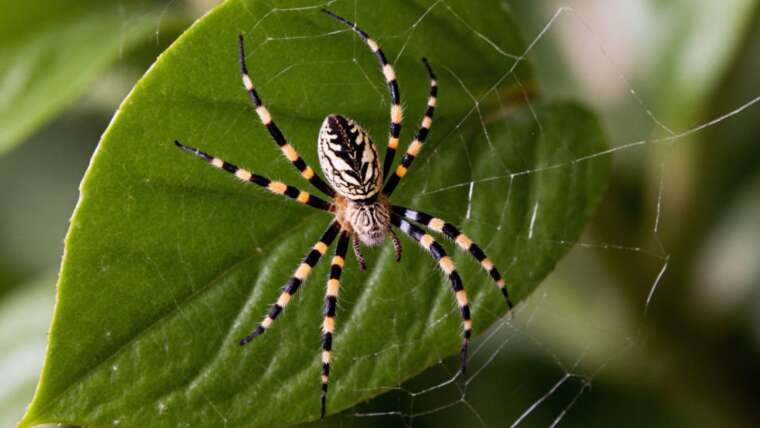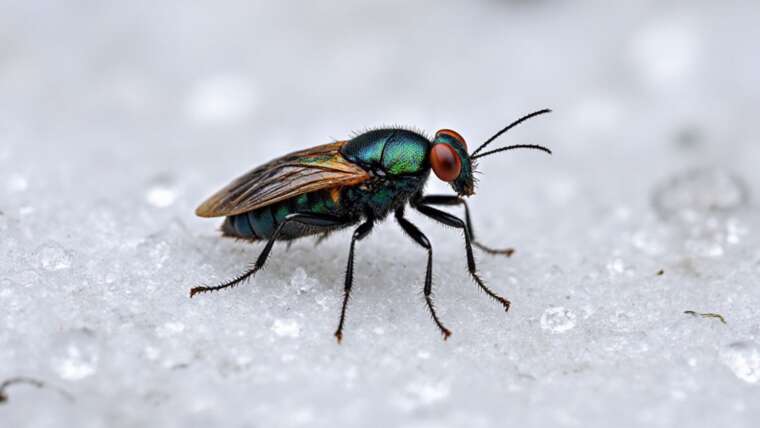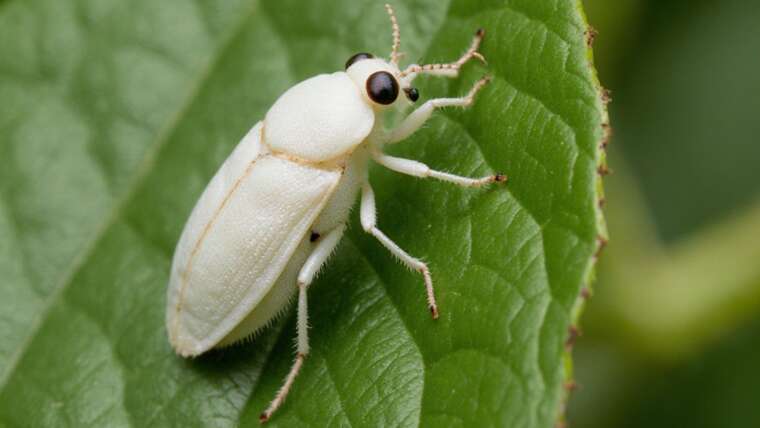You’ve surely heard of various insects like aphids and caterpillars that feast on plants. But have you ever considered the fascinating world of plants that eat insects? While the Venus flytrap is perhaps the most well-known carnivorous plant, several other species also indulge in a diet of insects. Read on to discover a selection of these intriguing plants that have adapted fascinating strategies for capturing their prey.
Pitcher Plant
The pitcher plant is easily recognizable by its unique leaves structured like elongated pitchers. This distinct shape forms a pitfall trap, luring insects with its enticing aroma and nectar. Various species of pitcher plants thrive in nutrient-poor soils, where they have evolved to supplement their diet with the protein-rich nutrients found in insects such as nitrogen and phosphorus.
Typically, pitcher plants attract prey by secreting sweet nectar along the edges of their pitcher-shaped leaves. Insects drawn to this sugary reward often slip and fall into the liquid pool at the bottom, where they inevitably drown. The plant then absorbs essential nutrients from the decaying insect carcass. Did you know there are approximately 10 species of pitcher plants within the Sarracenia genus native to North America? A unique tip: If you’re interested in observing their captivating chemistry, consider maintaining a pitcher plant in a terrarium where you can watch its predatory techniques up close!
Venus Flytrap
Venus flytrap stands out in the carnivorous plant realm for its distinctive appearance and quick reflexes. It showcases two hinged lobes at the ends of its leaves that snap shut when an unsuspecting insect enters its grasp. This plant utilizes specialized hair-like projections known as trichomes to detect potential prey. Each lobe contains multiple trichomes that must be triggered a specific number of times to minimize energy expenditure, ensuring that the plant acts only when it’s worth the effort.
Primarily native to North and South Carolina, the Venus flytrap isn’t merely a fly catcher; it also consumes spiders, beetles, and grasshoppers. Fascinatingly, the Venus flytrap can survive extended periods without food by entering a dormant phase. A fun fact to note: Though it thrives in a specific climate, the Venus flytrap can be successfully cultivated in other regions with a controlled environment. If you’re keen to try your hand at caring for one, remember that it prefers a dormancy period during winter—this helps it flourish in the growing season!
Butterwort
At first glance, the butterwort may not exhibit the gaudy traits of carnivorous plants like the Venus flytrap or pitcher plant. However, this plant has its own unique hunting methods, as it uses greasy leaves that can curl into a cup shape, effectively trapping insects that land on them. Butterworts are known to thrive in regions with poor soil conditions, where their insect-based diet compensates for the low nutrient availability.
Commonly found in the Southeastern United States, the butterwort’s unassuming beauty hides its predatory nature. A useful tip for plant enthusiasts: Butterworts enjoy being kept in slightly moist conditions and can thrive in terrariums, making them excellent for indoor gardening without the need for complicated setups. This way, you can enjoy observing their intriguing trapping behavior in a home environment!
Sundew
Sundew plants are visually captivating, appearing as if their leaves are adorned with glistening droplets of dew. However, what looks like dew is actually a secretion of tentacles tipped with powerful, sticky nectar that attracts unsuspecting insects. Once an insect is ensnared, the plant can curl its leaves around its trapped prey, ensuring that it is immobilized.
After successfully capturing its meal, the sundew secretes digestive enzymes from its leaves to break down the insect and absorb vital nutrients. This unique mechanism makes sundews well-suited for habitats with poor nutrient availability. An interesting fact: Sundews come in various sizes and forms, with some species growing in tropical locales while others thrive in temperate climates. For a fun home project, consider growing sundews—these plants often do well in small pots or containers, making them easy to maintain indoors.
Bladderwort
Bladderworts are unique in their aquatic nature, thriving in lakes, streams, and waterlogged soils, often floating on the surfaces of these environments. These plants have specialized sacs, or bladders, along their stems that create a vacuum to trap tiny prey like water fleas. Once an unsuspecting insect or small organism triggers the bladder’s opening, it quickly sucks in the prey, making it an incredibly efficient predator.
Following the capture, bladderworts digest their prey and absorb essential nutrients, filling the nutritional gap present in their aquatic homes. Did you know there are over 200 species of bladderworts? They exhibit remarkable diversity, with some capable of thriving in extreme environments, even in acidic bogs. For those interested in these remarkable plants, maintaining a small aquarium or water garden can provide a perfect habitat to grow bladderworts and observe their unique predation firsthand.

